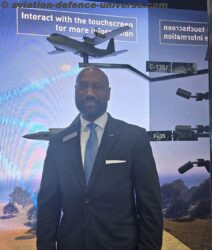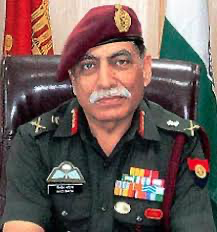
- The DGMOs of India & Pakistan speak on the hotline
- Military Diplomacy could be the new mantra
By Lt Gen Vinod Bhatia, PVSM, AVSM, SM (Retd)
New Delhi. 02 March 2021. The Year 2020 was a year of disruption. The made in China CoronaVirus led to an unprecedented pandemic, impacting the behaviour of individuals, society, people and nations. The year gone by also witnessed an aggressive China, changing the ‘Status Quo’ along the Line of Actual Control (LAC), bringing the two nuclear armed nations, home to more than one third of humanity, to the brink of war. In addition Pakistan too violated the ceasefire a record 5100 times along the Line of Control (LoC), shattering a fragile semblance of the Nov 2003 agreed upon cease fire. The Indian Armed forces and the army in particular responded with a resolve and a resilience, surprising the PLA as also increasing the costs on Pakistan army of the Ceasefire Violations (CFVs) along the LoC.
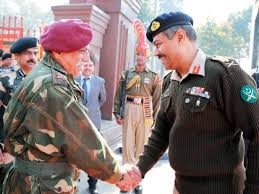
As all focussed on a simultaneous, synchronised and speedy disengagement of forces on either bank of Pangong Tso starting 10 Feb, in an unexpected move the two Director General of Military Operations (DGMO) of India and Pakistan exploiting the existing mechanism of the DGMO Hotline agreed upon and announced renewed ceasefire along the LoC. In a positive move “Both sides agreed for strict observance of all agreements, understandings and cease firing along the Line of Control and all other sectors with effect from midnight 24/25 Feb 2021”. It needs to be understood that the November 2003 ceasefire was not an agreement but again an agreed upon ceasefire in a hotline conversation between the two DGMOs. The ceasefire was beneficial and contributed to peace along the LoC till Sep 2007, when the CFVs started by Pakistan to aid infiltration. It also needs to be noted that Indian Army which had already commenced construction of an Anti Infiltration Obstacle System commonly referred to as the ‘ The LC Fence’ had been completed at the behest and push by then Army Chief General NC Vij. This ensured an effective counter infiltration grid leading to relative peace in J&K, with the violence levels being near subcritical, a fact not palatable to the Pakistan army and its policy of proxy war.
The LC fence raised the costs for Pakistan sponsored terrorism as infiltration attempts were neutralised on the LC fence an obstacle which was not easy to breach other than under covering fire. The fact that there have been NO reported CFVs East of Zojila in the unfenced snowbound areas of Drass , Kargil, Batalic where infiltration by terrorist is very difficult is indicative of the fact that CFVs are directly related to infiltration. The CFVs again spiked in 2012 and 2013, leading to a first ever meeting of the two DGMOs In December 2013, I was the DGMO then. The meeting was cordial, candid and constructive and ensured a sustained ceasefire for over six months. The dynamics changed and again the LoC witnessed frequent CFVs. Hence, the present agreement between the two DGMOs though a positive step, should not lead us to believe that there will be everlasting peace along the LoC. However, even periodic peace is welcome and gives hope of some sense of sanity and the possibility of understanding between the two people.
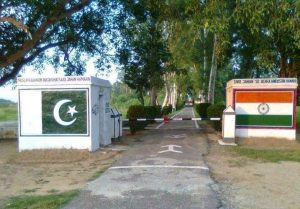
The joint statement also says that “In the interest of achieving mutually beneficial and sustainable peace along the borders, the two DGsMO agreed to address each other’s core issues and concerns which have a propensity to disturb peace and lead to violence”. This is the key issue, it needs to be seen as to how Pakistan under pressure from the FATF is going to address India’s concerns with regard terrorism. There are contradictory signals emanating from the Pakistan establishment. Moeed W. Yusuf, Pakistan national security Advisor to Prime Minister Imran Khan tweeted on 25 Feb evening “I have seen claims by Indian media that attribute today’s ceasefire announcement between Pakistani and Indian DGMOs to back-channel diplomacy between me and the Indian NSA. This is baseless. No such talks have taken place between me and Mr. Doval”, this after it was widely believed that back channels initiated at Moeed Yusuf’s behest were mainly responsible for the agreement. But that back-channel diplomacy was at play was evident from a series of steps that took place before Thursday’s joint statement by India and Pakistan that reiterated the two countries’ commitment to the 2003 ceasefire agreement. Despite the tweet, there were other signals indicating a will to restart the dialogue process.
General Qamar Bajwa, Pakistan Army Chief while addressing the Air Force graduates on 02 Feb said “We stand firmly committed to the ideal of mutual respect and peaceful co-existence. It is time to extend the hand of peace in all directions. Pakistan and India must also resolve the longstanding issue of Jammu and Kashmir in a dignified and peaceful manner”. It needs no reiteration that the Pakistan army drives the ‘India Policy’, hence the softening of stance after the precision air strikes by Indian Air Force at Balakote and India’s 05 Aug 2019 abrogation of Article 370 was a first.
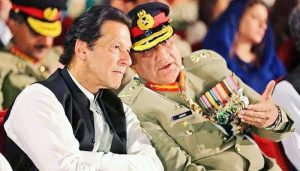
There are both internal and external factors which have contributed to the will to renew and sustain the Nov 2003 cease fire. India has raised the costs for Pakistan by an effective retaliation to Pakistan initiated CFVs, backed by strengthening of the multi tier Counter Infiltration grid, thus ensuring minimal cross LoC infiltration. Pakistan economic situation is well known, a debt ridden nation will have to seek international support, which is not easily forthcoming as Pakistan is perceived as the epicentre of terrorism. Geopolitical and Geostrategy also dictate a change in Pakistan’s behaviour as it no longer enjoys the frontline status in the Global War against terror, and the bases required to sustain the US/ MultiNational Forces in Afghanistan. On the other hand India, a risen, responsible, resurgent nation is seen as a global leader. The US, UN and many other nations have fully supported the renewed ceasefire agreement, as the daily duels along the LoC are perceived as a trigger for a spiral between the two nuclear armed nations.
The key challenge for India still remains as to how to change Pakistan’s behaviour in the mind to long term. Pakistan is not giving up on its tried and tested policy of waging a ‘Proxy War’. India’s response by way of the pre-emptive surgical and precision strikes post the high profile terrorist attack at Uri In Sep 2016 and Pulwama in Feb 2019, have demonstrated a politico-military will to raise the costs for Pakistan ‘ Low Cost High Effect War’, forcing Pakistan not to cross the ‘Red Lines’. Peace along the LoC is the first step, a positive one, this is an opportunity for the dialogue process to recommence. There is an opportunity and hope, however slim, and this beginning should be taken forward.
(Lt. Gen Vinod Bhatia (Retd.) is former Director CENJOWS and former Director General of Military Operations(DGMO) Indian Army. The views in the article are solely the author’s. He can be contacted at editor.adu@gmail.com)









































